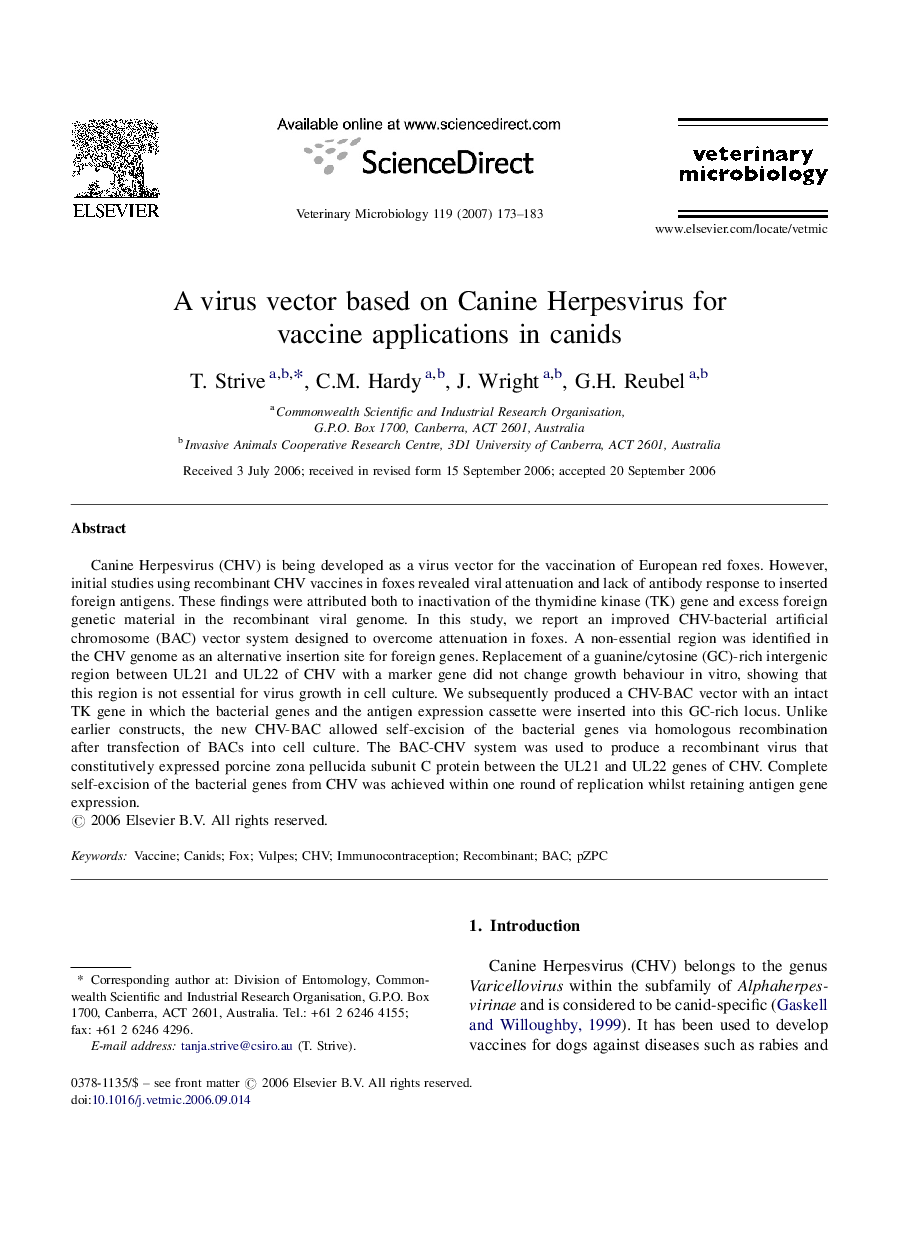| Article ID | Journal | Published Year | Pages | File Type |
|---|---|---|---|---|
| 2469404 | Veterinary Microbiology | 2007 | 11 Pages |
Canine Herpesvirus (CHV) is being developed as a virus vector for the vaccination of European red foxes. However, initial studies using recombinant CHV vaccines in foxes revealed viral attenuation and lack of antibody response to inserted foreign antigens. These findings were attributed both to inactivation of the thymidine kinase (TK) gene and excess foreign genetic material in the recombinant viral genome. In this study, we report an improved CHV-bacterial artificial chromosome (BAC) vector system designed to overcome attenuation in foxes. A non-essential region was identified in the CHV genome as an alternative insertion site for foreign genes. Replacement of a guanine/cytosine (GC)-rich intergenic region between UL21 and UL22 of CHV with a marker gene did not change growth behaviour in vitro, showing that this region is not essential for virus growth in cell culture. We subsequently produced a CHV-BAC vector with an intact TK gene in which the bacterial genes and the antigen expression cassette were inserted into this GC-rich locus. Unlike earlier constructs, the new CHV-BAC allowed self-excision of the bacterial genes via homologous recombination after transfection of BACs into cell culture. The BAC-CHV system was used to produce a recombinant virus that constitutively expressed porcine zona pellucida subunit C protein between the UL21 and UL22 genes of CHV. Complete self-excision of the bacterial genes from CHV was achieved within one round of replication whilst retaining antigen gene expression.
